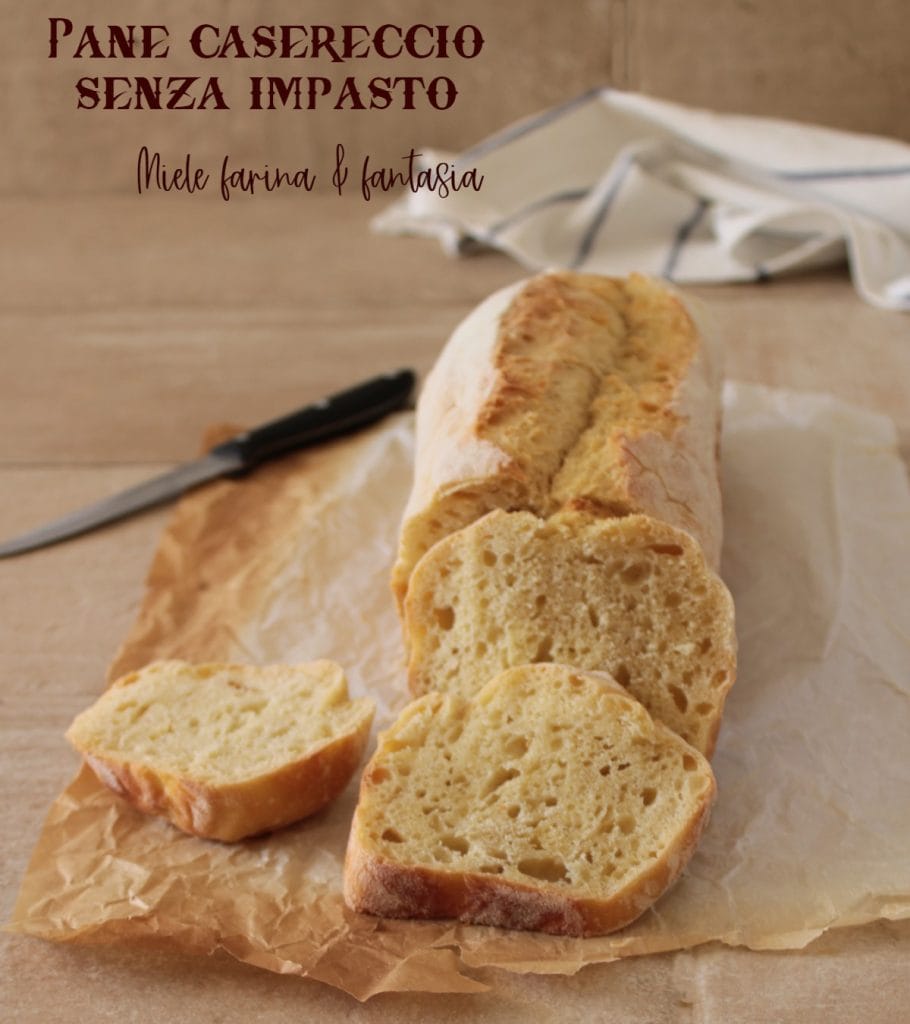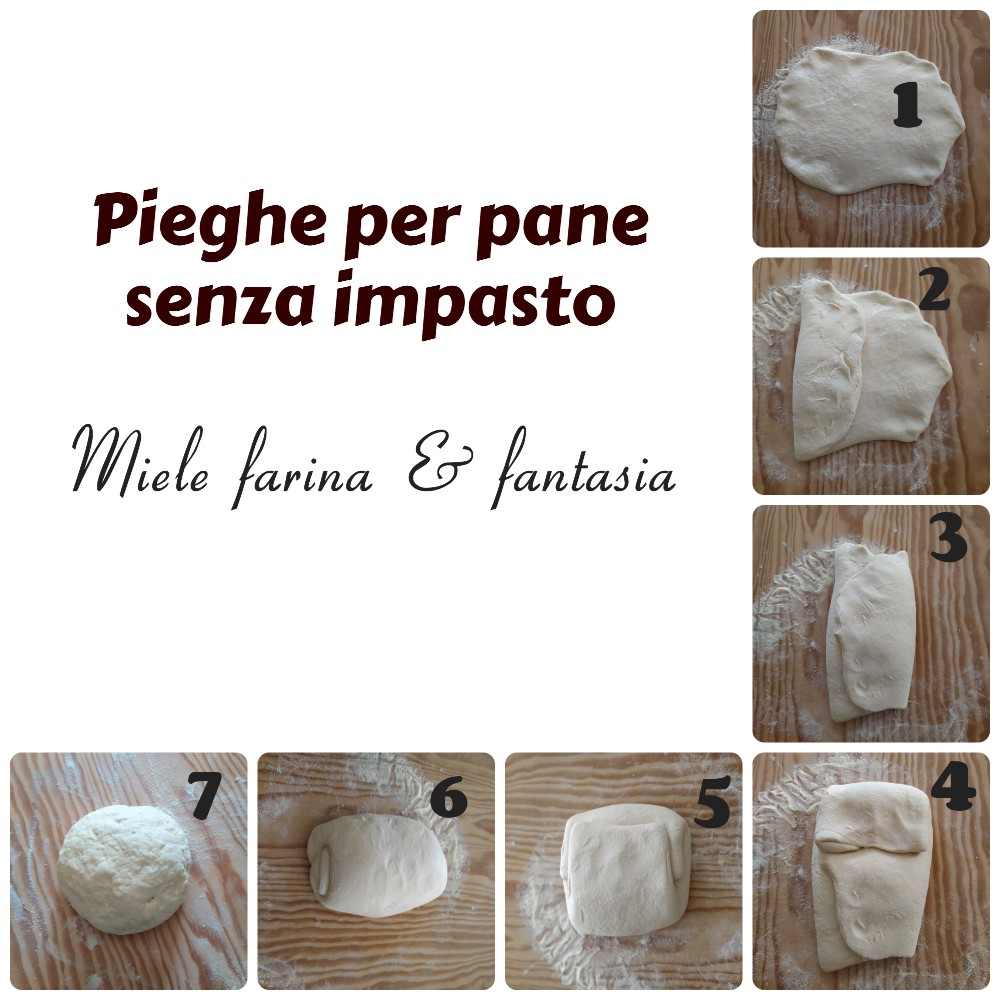The no-knead bread uses a bread-making technique that I really like and that gives excellent results even with a home oven. The bread is fragrant and the crust is crunchy just the way we like it. What is it about? It’s a very easy technique created and developed by an American baker, Jim Lahey. It is based on the principle of letting flour, water, and yeast do the work for us. In just a few steps, about 10 minutes, we too can have enviable bread. The bread is baked in a clay pot, but I bake it in a steel pot, without plastic parts or flammable materials. The quantities reported here refer to the bread made with 2 parts of all-purpose flour and 8 parts of semolina flour, but we can use any flours we want. When I use other types of flour, the amount of water varies significantly.

- Difficulty: Easy
- Cost: Cheap
- Rest time: 12 Hours
- Preparation time: 10 Minutes
- Portions: About 4 lbs
- Cooking methods: Oven
- Cuisine: Italian
- Seasonality: All seasons
Ingredients
- 5.3 oz Sourdough starter
- 7 oz All-purpose flour
- 28 oz Re-milled durum wheat semolina
- 1 tsp Wildflower honey (optional)
- 0.5 oz Fine salt
- 3 cups Water
- as needed Re-milled durum wheat semolina
Preparation
Don’t be fooled by the process that seems long; in reality, you will spend only about 10 minutes to make the dough. It seems long because I have been very detailed, especially for those approaching bread-making or this technique for the first time.
1) Refresh the sourdough starter according to our habits, and when it is well-risen, take the quantity needed to make the bread.
2) Place the yeast in a large bowl with the honey and water. Dissolve the yeast (with your hands like grandma did or with electric beaters) until you get a semi-liquid mixture.
Combine the sifted flours, salt, and mix all the ingredients coarsely by hand for about 30 seconds, just enough time for the water to be absorbed by the flours (we should not knead, in fact). The dough will be very soft because it has a high hydration and is sticky. Cover the bowl with plastic wrap and place it in the fridge to mature for 12/18 hours at most.
3) After the maturation time, take the bowl with the dough out and leave it at room temperature for about 2 hours or less if it is very hot. Then flour a work surface generously with semolina (it helps dry the dough) and gently turn our dough onto it, giving it an approximate square shape.
4) Start folding.
-With a dough scraper or spatula, lift the left side of the dough and bring it towards the center (photo 1).
-Now lift the right side of the dough and bring it towards the center (photo 2)
-Lift the top side of our hypothetical “square” and bring it towards the center (photo 3)
-Finally, lift the bottom side (the one closest to us) and bring it towards the center (photo 4).
You will have a dough like the one in photo 5.
-Now we just have to roll it on itself from top to bottom (photo 6) to get an oblong loaf to place in a loaf pan; or make a ball (photo 7) to place in a basket for a round loaf.
Divide the dough into two or more pieces according to our needs, shape them as we desire, and place them in the chosen molds already lined with a kitchen towel, generously dusted with durum wheat semolina. Also dust the surface of the dough before closing the edges of the towel, and let our loaf rise at room temperature for 2-3 hours at most.
5) After this additional resting period, preheat the oven to the maximum temperature. Place in the oven the container that will bake the bread. Make sure there are no wooden or plastic parts and use oven mitts and potholders as the pot will be red hot.
6) When the oven reaches temperature, with due precautions, remove the pot, turn the bread inside (the side that was underneath will end up on top), close with the lid, and bake on the lowest part for 35 minutes.
7) After 35 minutes, take the pot out of the oven and remove the bread, being careful not to burn yourself. Lower the temperature to 392°F (200°C) and immediately place the bread (simply resting on a baking sheet) back in the oven at mid-height for another 15 minutes. In the last 5 minutes of baking, the oven door should be open a crack to let out excess moisture and thus make the crust crispier. At the end of the baking, immediately remove the bread and let it cool.


